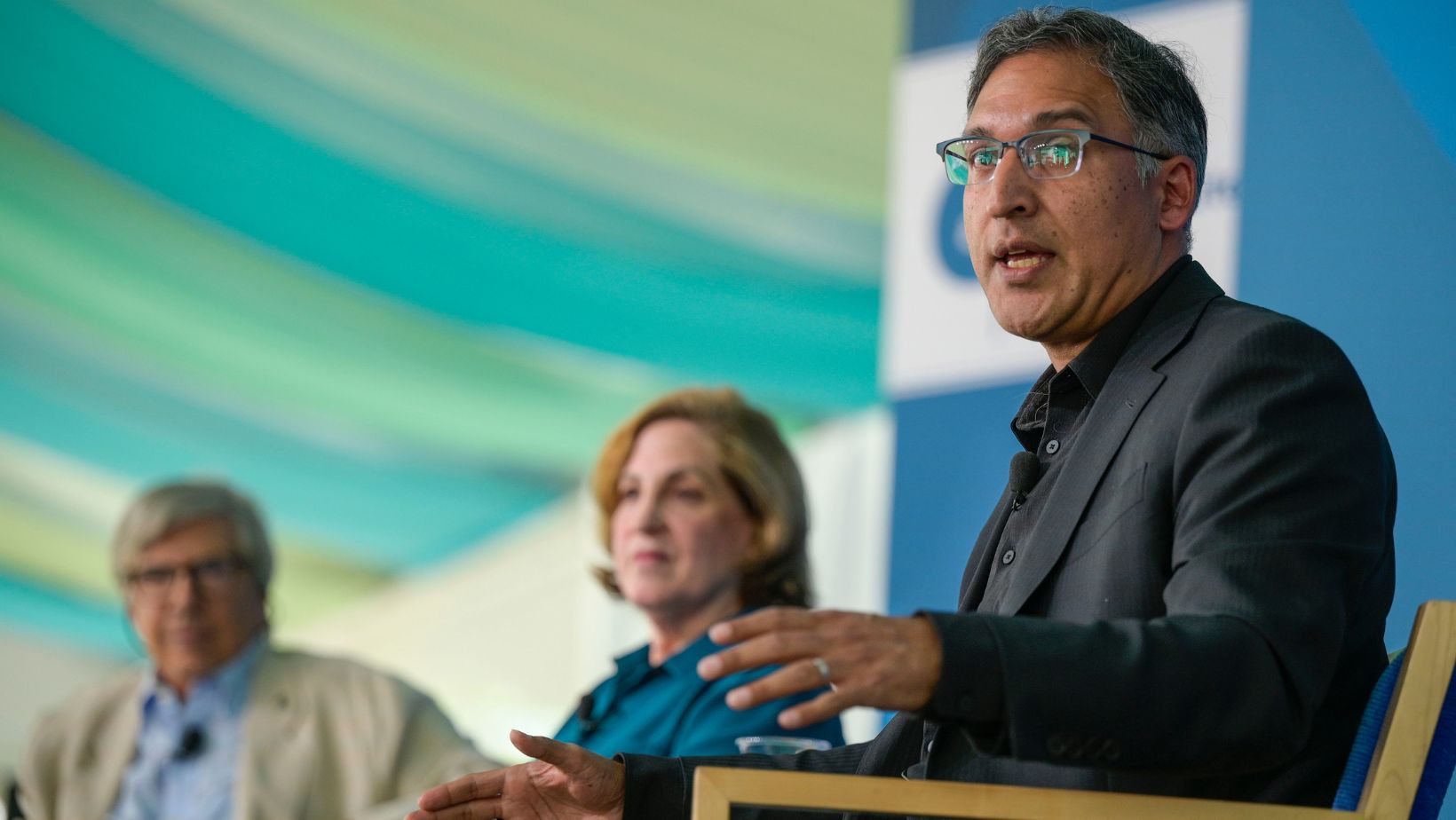Excellence in State Public Health Law Program Cuts Across Silos to Advance Policy Goals
The State Department of Health is at one end of the capital city. The statehouse is at the other. While legislators and the governor’s staff take an interest in questions of health and wellness, the current focus on ACA implementation and Medicaid budgets mean that public health prevention and population-based strategies often take a back seat. It is the public that pays, since obesity, chronic illness, and substance abuse are the biggest drivers of health care costs, and prevention strategies, many of them behavioral, promise the biggest payoffs both in population wellbeing and health care savings over the medium to long term. It is a message that can be a tough sell in state legislatures, where the time horizon for policy decisions is often compressed to a budget cycle or electoral cycle. The critical question: how to encourage public health investments that have longer term payoffs for states?
|
ESPHL Advisory Committee Georges C. Benjamin Susan Gerard Christine Gregoire Richard Hamburg Paul Jarris Martha King Carmen Hooker Odom Robert M. Pestronk James Douglas |
Enter the Excellence in State Public Health Law Program (ESPHL). A project of the Aspen Institute Justice and Society Program (JSP), with support from the Robert Wood Johnson Foundation (RWJF), ESPHL is a two-year pilot that debuted in August 2013, bringing together eight-person teams from eight states around an important policy initiative selected by each state based on its own public health priorities (click here to see short descriptions of each state’s project). Teams are led by the state health official or his/her high-level designee. Team members include not only health department experts, but also members of the state legislature, the governor’s health liaison, legislative drafters, and public health counsel. Several teams in the 2013-2014 cohort have also included officials from coordinate Cabinet-level agencies. For example, the Minnesota team, led by Dr. Edward Ehlinger, includes the state’s public safety and human services commissioners, in its efforts to combat binge drinking.
The teams have diverse public health goals. Stephanie Williams, Arkansas’s Deputy Director for Public Health Programs, has focused her team’s efforts on tracking high school reporting of women participating in sports as a strategy to improve physical activity in their state. J.T. Lane, Assistant Secretary for the Louisiana Office of Public Health, brings to the ESPHL project a strong focus on improving the food safety training of restaurant workers. Commissioner Michael Fine of Rhode Island sees the ESPHL project as an opportunity to help integrate the public health system with primary care in his state. The variety of the initiatives chosen by the ESPHL state teams reflects the broad scope of public health prevention efforts across the nation.
A distinguished Advisory Committee supports the teams. Among the members are former Governors Christine Gregoire of Washington state and James Douglas of Vermont—both of them past presidents of the National Governors association—who made public health a priority during their terms as governor. The Advisory Committee also includes leaders of major public health organizations, including APHA (Dr. Georges Benjamin), ASTHO (Dr. Paul Jarris), NACCHO (Robert Pestronk), NCSL (Martha King), and the Trust for America’s Health (Richard Hamburg).
Dr. Leah Devlin, Professor of the Practice at the UNC-Gillings School of Global Public Health and a former ASTHO President, has helped shape the public health content of ESPHL’s curricular offerings. The Network for Public Health, Public Health Law Research at Temple University, and other RWJF partner organizations have provided technical assistance, data sets, and best practice models to supplement ESPHL’s evidence-based approach to policy. Kathryn Wehr of the Robert Wood Johnson Foundation provides consultation and brings added support from across RWJF to benefit the teams.
The Aspen Institute’s values-based leadership programming and its excellent convening power were reasons RWFJ tapped it for the new project. “We are grateful to Dr. Devlin for her expertise in public health policy development,” says Mike Green, Associate Director of JSP, “since our focus is process.” Green went on to say, “I am not sure everyone on the teams understood why we asked them to read a science fiction story [“Those Who Walk Away from Omelas,” by Ursula LeGuin] but we’ve found it offers a great lesson on the societal costs of inequity, recognizing that eliminating health disparities requires a similar ethical framework for decision-making.”
Applying lessons from other sectors is part of the “Aspen Method,” which takes motivated adult learners out of their professional comfort zones, reconnects them with foundational philosophical and ethical principles, and then turns back to content, in order to enrich perspectives on familiar materials. This approach was particularly important here, felt ESPHL planners, since team members with varying expertise come from a variety of agencies, include elected and appointed officials, and may have different vocabularies and priorities. In this dynamic environment, connecting team members over shared values is a key aspect of team-building, one critical to successful policy development.
Because a primary focus of the ESPHL program is to build robust teams, with relationships that will outlast the formal one-year program span, JSP organized three leadership retreats, bringing together the entire 64-person cohort. Attendance has been 85% at the two retreats so far.
The first leadership retreat, held in Glen Cove, NY in August 2013, featured remarks from former Governor Gregoire. Following the retreat, the ESPHL teams met in their home states to sharpen the methodology and goals of their policy initiatives. Monthly conference calls with JSP staff and opportunities to connect with technical assistance resources and Advisory Committee members, along with funding of $10,000 per team, helped to develop and refine project goals in the eight states. Here are some of the ways teams have applied their funding:
- The Connecticut team, led by Dr. Jewell Mullen, organized an informational forum for state legislators, municipal leaders, and local health directors to build a deeper understanding of Connecticut’s public health system and articulate the need for a core set of foundational public health capabilities.
- The Hawaii team, led by Dr. David Sakamoto (after the untimely death of Commissioner Loretta Fuddy), is arranging consultant services to assess health messaging, health psychology, and before-and-after knowledge/attitudes/practices surveys, focused on parents and educators in target schools, with the goal of improving children’s oral health.
- The Minnesota team has conducted an in-state poll on measures to curb binge drinking, which yielded some striking data on residents’ preferences.
- The Virginia team, led by Acting Commissioner Marissa Levine, is organizing an in-state leadership retreat at the University of Virginia for the summer of 2014, patterned on the ESPHL leadership retreats in New York and California, in order to sustain its momentum and extend its work.
By the time ESPHL participants arrived in San Diego for the second leadership retreat in January 2014, it was apparent, as Governor Douglas noted, that “as the months have gone on, we are seeing the teams coalesce, and I expect there will be concrete results that will help improve population health in the ESPHL states.” The San Diego program included keynote remarks by Hank Cardello, a former food industry executive turned speaker and advocate, who encouraged team members to engage the food industry as partners, rather than as adversaries, around healthy eating. His remarks were, as Dr. Devlin observed “a nice bookend” to the tough approach that Governor Gregoire described in the battle with the tobacco industry, which she experienced both as her state’s Attorney General and later as Governor implementing the settlement with industry.
 Another highlight of the San Diego meeting was its local angle. Dr. Ron Chapman, California’s State Health Officer, discussed some of the hot button public health issues in his state, and Dr. Steven Teutsch, Chief Science Officer in the Los Angeles County Health Department, discussed modeling as a key tool for developing policy. San Diego Health Commissioner Nick Macchione described the Health in All Policies approach of the Live Well, San Diego! campaign and its catchy “3-4-50” message (see graphic at right). The 3-4-50 approach is an excellent example of how important it is to simplify public health concepts in order to convey them to diverse audiences.
Another highlight of the San Diego meeting was its local angle. Dr. Ron Chapman, California’s State Health Officer, discussed some of the hot button public health issues in his state, and Dr. Steven Teutsch, Chief Science Officer in the Los Angeles County Health Department, discussed modeling as a key tool for developing policy. San Diego Health Commissioner Nick Macchione described the Health in All Policies approach of the Live Well, San Diego! campaign and its catchy “3-4-50” message (see graphic at right). The 3-4-50 approach is an excellent example of how important it is to simplify public health concepts in order to convey them to diverse audiences.
Teams were energized by the retreat. Here’s what Lorrin Kim, Chief Policy Officer for the Hawaii Department of Health, reported shortly after his return to Honolulu: “Our team has met three times since San Diego, and we have refined our ideas [on innovative ways to improve dental health among underserved Medicaid-eligible children]. So although all of us are now in the throes of the first days of the [legislative session], the energy is still high.” Kim went on to provide details of the Hawaii’s team progress, notable particularly in its engagement of the team’s legislative contingent.
ESPHL organizers are now looking to the August 2014 wrap-up session—where members of the cohort will receive the title “ESPHL Fellow”—with a focus on the idea of “excellence.” The last session will also allow collection of a final set of progress metrics. “We’ve requested self-evaluations from these participants at each phase” of the project, said RWJF consultant Nancy Kaufman of Strategic Vision Group, who will also interview select team members. Kaufman’s team will analyze the data that has been collected throughout the ESPHL pilot.
Meanwhile, the Aspen Institute Justice and Society Program has provided team members with access to a password-protected document and messaging site, Base Camp, to allow not only reporting and information sharing but also what has been called a 24-hour “virtual breakout session,” enabling all eight state teams to share their research and their challenges.
Team leaders have been generous in their assessments of the ESPHL experience at its midpoint. Said Dr. Mullen, “ESPHL has allowed me to drive a policy idea, rather than manage or react, and to begin to build consensus with various partners, particularly the local health directors, on a challenging public health system issue. We are also educating core staff on the issue so that this multiyear effort can be sustained over time.” John Wiesman, the State of Washington’s recently appointed Secretary of Health, said ESPHL “allowed me as a new Secretary to build and consolidate relationships across branches of government.”
Creating strong public health law and policy across branches of state government to address public health problems is a formidable but vitally important strategy, particularly in tight economic times. ESPHL promises to be a useful tool to aid in improving the health of people in the participating states, with lessons learned that will also have relevance for other states.

